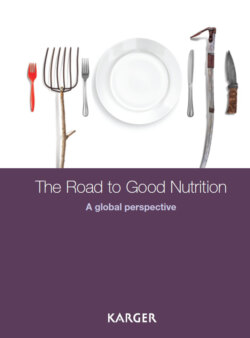Читать книгу The Road to Good Nutrition - Группа авторов - Страница 118
На сайте Литреса книга снята с продажи.
The four dimensions of food security
ОглавлениеThe definition of food security highlights the fact that food security is a multi-faceted problem, which includes four key dimensions: availability, access, utilization and stability. The four dimensions of food security are defined as:
| Physical AVAILABILITY of food | Food availability addresses the “supply side” of food security and is determined by the level of food production, stock levels and net trade. |
| Economic and physical ACCESS to food | An adequate supply of food at the national or international level does not in itself guarantee household level food security. Concerns about insufficient food access have resulted in a greater policy focus on incomes, expenditure, markets and prices in achieving food security objectives. |
| Food UTILIZATION | Utilization is commonly understood as the way the body makes the most of various nutrients in the food. Sufficient energy and nutrient intake by individuals is the result of good care and feeding practices, food preparation, diversity of the diet and intra-household distribution of food. Combined with good biological utilization of food consumed, this determines the nutritional status of individuals. |
| STABILITY of the other three dimensions over time | Even if your food intake is adequate today, you are still considered to be food insecure if you have inadequate access to food on a periodic basis, risking a deterioration of your nutritional status. Adverse weather conditions, political instability, or economic factors (unemployment, rising food prices) may have an impact on your food security status. |
Source: United Nations Food and Agriculture Organization (FAO)
For food security objectives to be realized, all four dimensions must be fulfilled simultaneously.
